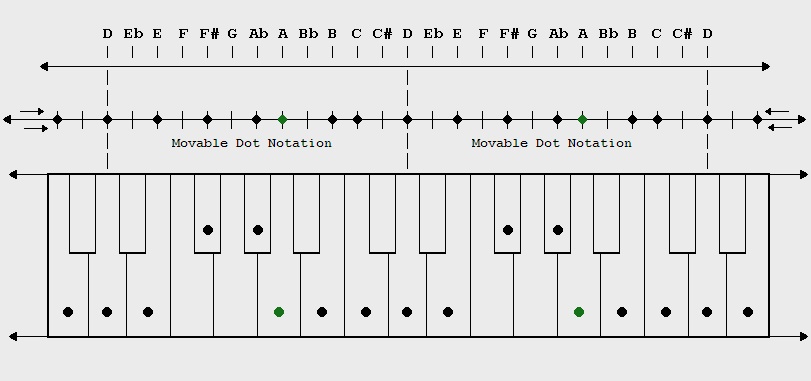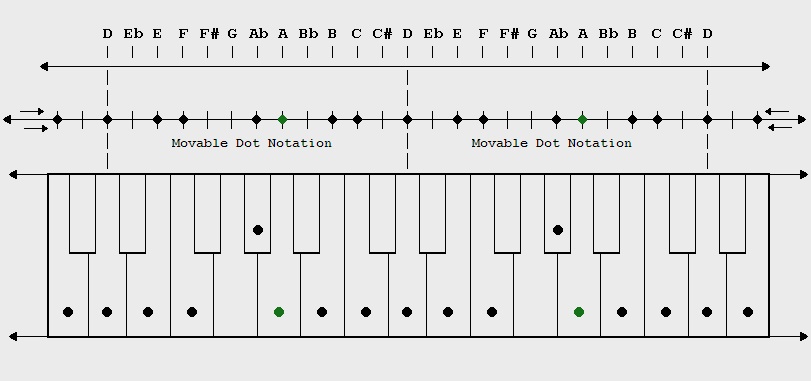

|
New modes still needed to be introduced in order to provide an equal treatment of the positions within the other scale-forms that were being used in the art throughout history, namely: the Medlodic Minor Scale and the Harmonic Minor Scale. With the Melodic Minor Scale, we may mention the fact that, by definition, this scale is also a Diatonic Scale, since it contains only whole steps (where a chromatic note is skipped) and half steps (where a chromatic note is not skipped). That is why the Major and Natural Minor Scales are specifically said to reside in the 'Primary' Diatonic Scale. |

Figure 1.5 : A Melodic Minor
|
The Melodic Minor Scale (above) and the Harmonic Minor Scale (below) are both common enough in the art as to have been respected by 'Classical Harmony Theory'; meanwhile, their modes historically have not been given an equal amount of credit as have those of the primary diatonic scale. A portion of their modes have been found to be quite useful in various more contemporary genres; so some of their modes have been given names that are known and used in the art. However, since such names may lack substantial historical integrity, there is an inherent potential that such modes may have more than one name in the art; meanwhile, some of these modes are not yet carefully named. |

Figure 1.6 : A Harmonic Minor
|
It is apparent that the scale-forms that possess these two popular scales, are different in form than the primary diatonic scale-form; meanwhile, these scales technically have modal relatives and could likewise be expanded into Spectrums. Once the common traits between all three of these spectrums could be determined and be applied as 'regiments' towards the discovery of other useful spectrums, many other modal scales that are either unknown, unnamed, or unaccredited in the art would become equally qualified for involvement in the system and the map. |
| Next |

